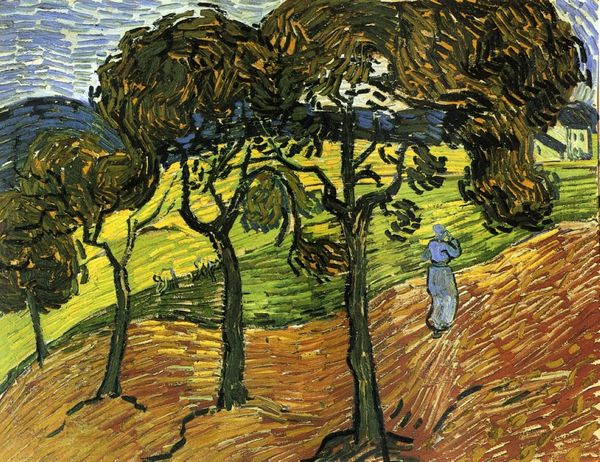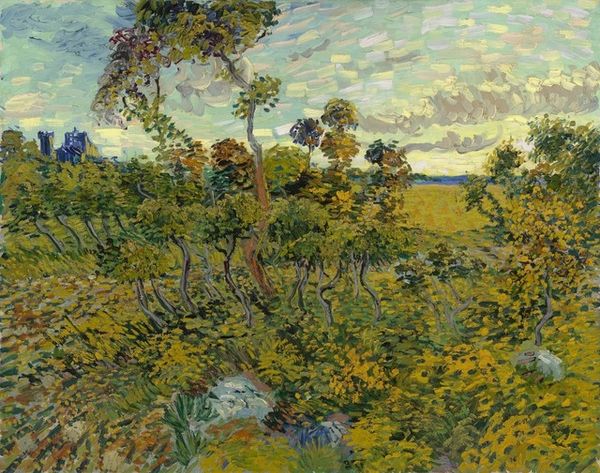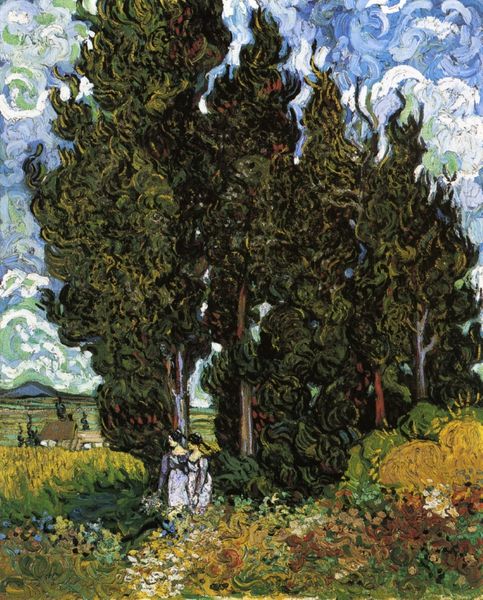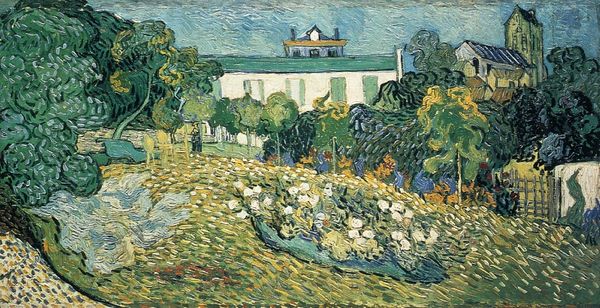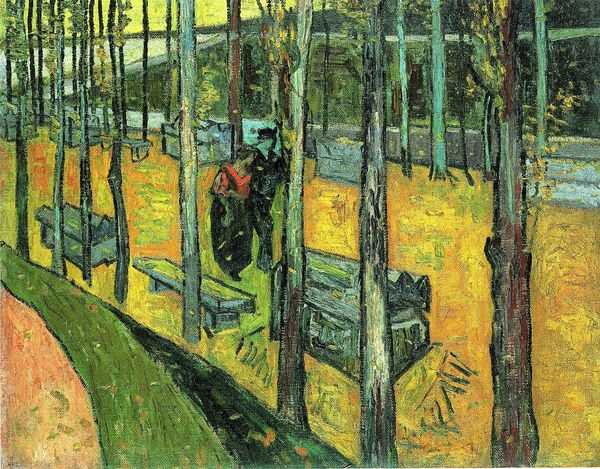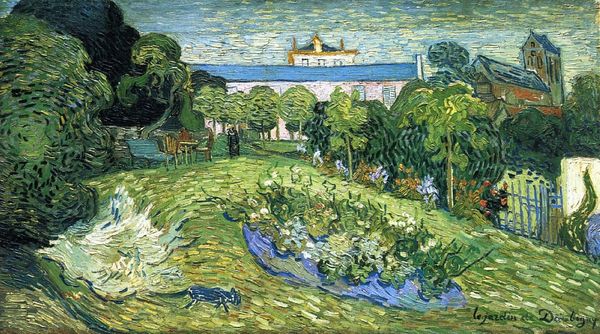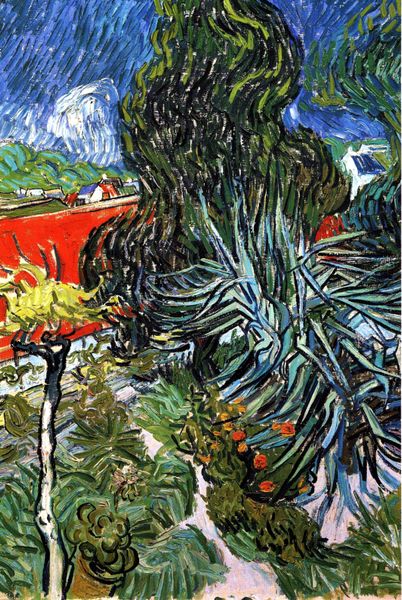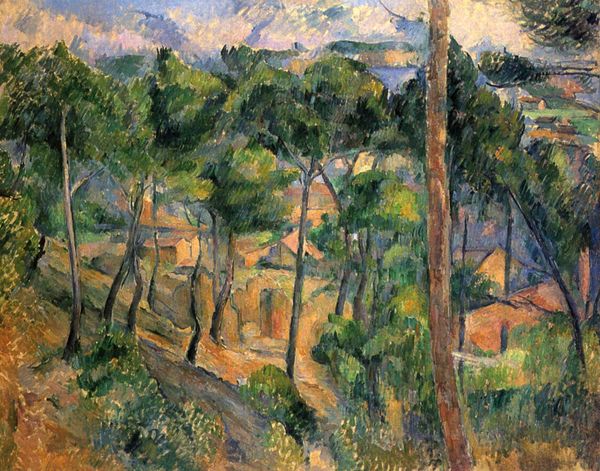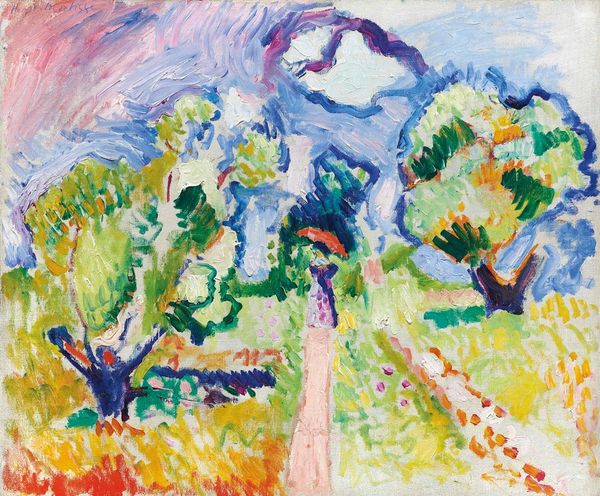
Dimensions: 73.5 x 92 cm
Copyright: Public domain
Editor: Here we have Van Gogh’s "The Garden of St. Paul's Hospital at St. Remy," painted in 1889. I’m struck by how restless it feels despite being a garden scene; the brushstrokes are so energetic, it’s almost dizzying. What’s your take? Curator: I agree. The energy is palpable, especially when considering its context. Van Gogh painted this while voluntarily institutionalized. So, this garden, this controlled nature, represents both refuge and confinement. How do you think the institution itself, a place intended for healing, shaped his vision of the garden? Editor: That's a compelling thought. Perhaps the heightened emotion is a direct result of this strange duality: the beauty of the natural world set against the backdrop of mental distress. Do you think this specific environment influenced the stylistic choices he made? Curator: Absolutely. Consider the thick impasto, the swirling brushstrokes. It wasn’t just about representing the garden; it was about conveying an internal state. Van Gogh pushes beyond mere depiction to express feeling, influenced both by Post-Impressionist ideas and the institution itself as a social force and a psychological space. What is communicated through these expressive marks? Editor: Maybe a yearning for peace that’s just out of reach. I hadn’t thought about the hospital's influence that deeply. I was too caught up in the surface beauty. Curator: Exactly! And that's the power of art – it invites us to consider not just what we see, but *why* we see it that way, and what social forces created that space for Van Gogh to express himself. Editor: This has completely shifted my understanding. I see it now as more than just a pretty landscape. Thank you.
Comments
No comments
Be the first to comment and join the conversation on the ultimate creative platform.



